Team:UCL
From 2014.igem.org
University College London, iGEM Team 2014 - Goodbye Azo Dye!
Azo dyes are the main synthetic colourant used in a wide range of products, such as clothing, cosmetics, tattoo ink, and more. They are generally known to be safe and stable colour compounds, however, when they are broken down in the guts of organisms, they can result in dangerous, toxic products. In industry, excess textile dyes are often simply washed off and disposed of, without proper treatment to remove the leftover azo dyes in the waste water. As a result, these azo dyes accumulate in rivers and lakes, causing problems further downstream. When animals drink these polluted waters, their gut bacteria will break down and release toxic chemicals. As well as being damaging to the environment, the released chemicals can be mutagenic and carcinogenic, which can further cause health issues to other animals, including humans.
The UCL iGEM Team 2014 are going to build a bacteria with BioBricks capable of controlling the break down of excess azo dyes found in industrial waste water. In this way, we can try prevent toxic build-up in the environment, keep our water systems clean, and reduce health problems caused by azo dyes.
Specifically, this will involve creating an enhanced azo dye decolourising organism by introducing the genes for three enzymes related to the degradation of these dyes (azoreductase, laccase, and lignin peroxidase) into a host E. coli cell. In an industrial context, these three enzymes would work sequentially in a bioreactor of changing conditions. First, azoreductase will cleave the azo-bond (N=N) by a double reduction using NADPH as a cofactor, producing a series of highly toxic aromatic amines. These compounds will be then oxidised by incorporation of lignin peroxidase and laccase, completing decolourisation and decreasing toxicity levels, to the point that the final products of the process are less toxic than the intact dyes themselves. The complementary action of azoreductase and lignin peroxidase will be studied in order to find out the best possible approach of sequential reaction, and this core degradation module will be extrapolated to other areas such as BioArt projects and work on algal-bacterial symbiosis, trying to set up the foundations for a synthetic ecology.

About our project
Find out more about the issues of azo dyes, and how we are using synthetic biology to try solve this problem.

Meet the team
Get to know us! Come find out our diverse and colourful backgrounds, and how we are all going to make this iGEM team brilliant.
Latest updates
New to Synthetic Biology?
Find out more about the exciting new field of synthetic biology!
The Basics to Microfluidics
We'll also be applying the multidisciplinary field of microfluidics to our project. Find out more here!
BioBrick Parts
See what BioBrick parts we'll be creating and characterising to carry out our project.
Our sponsors
 "
"












